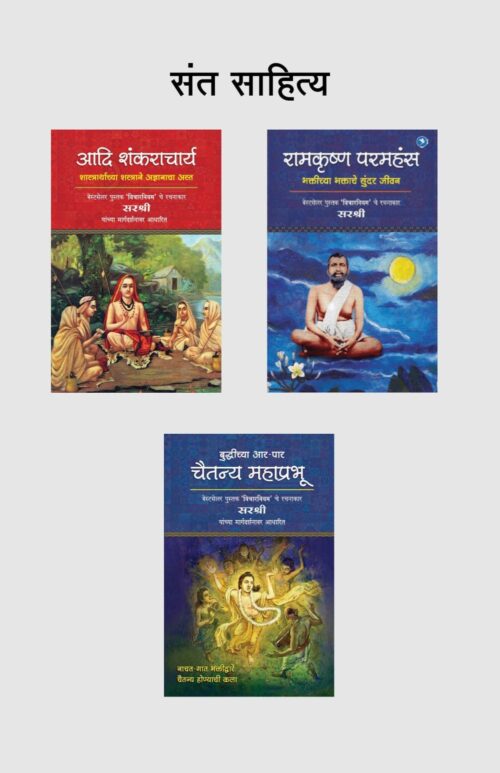
The True Holi Celebration
This post is also available in:
![]() Hindi
Hindi
Holi… the festival of colours! Holi one of the favourite festivals celebrated in India has its importance since ancient times. Every festival celebrated in India has some or the other mythological significance and cultural events associated with it. Let’s take a quick look at the story behind celebrating this festival. This festival is linked to the mythological story of Bhakt Prahlad and Holika.
Bhakt Pralhad’s father Hiranyakashapu was a demon king. He was an atheist and did not want the people of his kingdom to worship any other deity except himself. The one who worshiped other deities would face death sentence. Prahlad, his son, was an ardent devotee of Lord Vishnu. His father tried to persuade Prahlad to give up worshiping Lord Vishnu couple of times, without success. Finally one day, he decided to punish his own son and sentenced him to death. He tried to kill Prahlad in many ways, but could not succeed. Hiranyakashapu’s sister Holika was blessed with a boon that no fire can harm her in any way. Hence, Hiranyakashapu ordered his sister Holika to sit on a pyre holding Prahlad in her laps, hoping that Prahlad would burn to death on the pyre. But while Holika did so, to the surprise of all, Holika was burnt to death and Pralhad remained unharmed. Thereafter, Hiranyakashapu was killed by Lord Vishnu who appeared in the Avatar of Narasimha (half-man, half-lion). Since then, the festival of Holi is celebrated as a symbol of victory of good over the evil and Prahlad was called Bhakta Prahlad
Let us understand what the characters in this story symbolise.
1. Hiranyakashapu:
Father of Bhakt Prahlad, he is the symbol of our mind which always compares things and labels it as good or bad. This characteristic of the mind creates sorrow. He is a symbol of the ego which considers itself to be superior to others and demands respect from others.
2. Holika:
The sister of Hiranyakashapu: She represents the tendencies and wrong beliefs hidden within the human mind – tendencies such as envy, lust, anger, greed, hatred, etc. which keep inflating our ego. Under the influence of beliefs, we cannot see the Truth. The fire signifies the internal state of the individual when these tendencies and beliefs arise in full force. When the individual burns (is troubled) in the intense fire of these tendencies, only true devotion to God with understanding can save him from the fire. This devotion shows him the way to fight these tendencies and also gives him the strength to face them. Only then does the Truth, pure consciousness shine forth.
3. Prahlad:
Pralhad is the symbol of the Truth. The Truth (the real Self) is hidden behind the mind. The mind wants to attain supremacy over the Self, but it can never succeed. For example, the eyes see through the spectacles and the eyes can see the spectacles, but the spectacles can never see the eyes. In the same way, the mind can never control the Self. When the mind surrenders, the Truth or the Self shines forth.
To commemorate the burning of tendencies and the resplendent victory of devotion, Holi is celebrated by lighting fire. People gather in groups and light fire using wooden sticks. Various rituals are performed and offerings are made. The next day, people play with vibrant colours and enjoy the celebration. But just performing these rituals and playing with colours is not true celebration. True celebration is possible only when the outside fire lights the fire of contemplation within us. This fire of contemplation should continue to burn within us till we get re-established in our true state. During childhood, until the age of two to two-and-half years, every child is in the state of Self-realization, our true innate nature. The child dwells in pure consciousness. We need to re-establish ourselves in this state by shedding all the beliefs that we have acquired as we grew up.
The festival of Holi gives us the opportunity to become carefree and pure like a child and be established in the state of Self-realization. What does it mean to be child-like again? What do the colours indicate? Why do we light the fire? Let us understand this in detail.
The Real meaning:
1. The pure, soothing fire: The fire of Holi symbolizes our thirst for the Truth. This pure fire burns all our beliefs and desires that are obstacles in realizing our true Self. This thirst for Truth provides us the strength to face all the problems in life. This fire does not just burn, instead it cools us (gives us peace) from within. Our bodies are made up of five elements namely ether, air, fire, water and earth. These elements have emerged from the formless entity (the Self). Fire is used as a symbol to worship this formless entity.
2. The wooden material, which is used to make the pyre during Holi celebration, can be of two types. One that is soaked in water or the fresh branches of trees which have water content. The other is the dry twigs or the dried branches of trees. The soaked wood represents lethargy, ego, hatred, idleness and the dry twigs represents hyperactivity, greed, envy, jealousy, ambition etc.
One wooden stick is used to push all the other wooden sticks inside the pyre. This very stick represents the quality of equanimity. The other sticks represent our beliefs and desires. The stick used to push all other sticks inside the pyre represents the thought of devotion or the thought of eagerness to unite with the real Self. It helps to burns all beliefs and desires in the fire of thirst for the Truth.
3. When all the sticks are pushed in the pyre, even the last stick which represents equanimity is also put in the pyre. This act means that the quality of equanimity is the nature of the body and we are beyond the body. Hence this quality also needs to be transcended to acquire the state, which is called as the ‘Gunateet’ (trancendental) state. This is the state when one acquires Self-realization.
Knowing and practicing all this is the real purpose behind Holi celebration.
The importance of colours used during Holi:
1. All colours emerge from one fundamental colour i.e. the white colour. In the same way, all the forms emerge from the formless entity. For example, if we light a bulb and put different coloured curtains around it, then the light coming out will be of different colours depending upon the colour of the curtain in front of the light. Red, blue, green and so on. But we know that the light emitted by the bulb is the same. The colours used during Holi represent this very fact that we all are a part of that formless entity – the Self, even though we appear different and separate on the outside. It points to the the underlying unity beyond the diversity. The colours are used to give the message that we are all one. Hence, it is said that during this festival, even enemies become friends again.
2. Physical reasons behind celebrating Holi:
The air gets purified in the pyre. It is also a mark to welcome summer. Harmful insects die in the smoke generated by the fire. In olden times, people kept stock of wood at home so as to burn them to prepare their meals or for the bonfire in winters etc. Holi is celebrated when winter ends and the temperature begins to rise. As the temperature rises, there was no need of hoarding the wood for creating bonfire and hence people used to burn this stock of wood during Holi. This helped in letting go of the habit of hoarding.
The next day is celebrated as Dhuliwandan. It is a custom of smearing the ash generated from the Holi fire, on the forehead. This is called Dhuliwandan. People put this ash on their foreheads as a symbol of shedding their beliefs, desires and acknowledging the Truth – the Self. In fact, the body is bound to perish some day and merge with the five elements. When one understands the truth, one realizes that only the body perishes and merges with the earth. The Self is immortal.
The festival of Holi is meant for remembering all these truths of life.
Hence, let us burn our wrong beliefs and tendencies in the fire of Holi and celebrate this festival in true earnest with the right understanding.
~ Sirshree


















Add comment